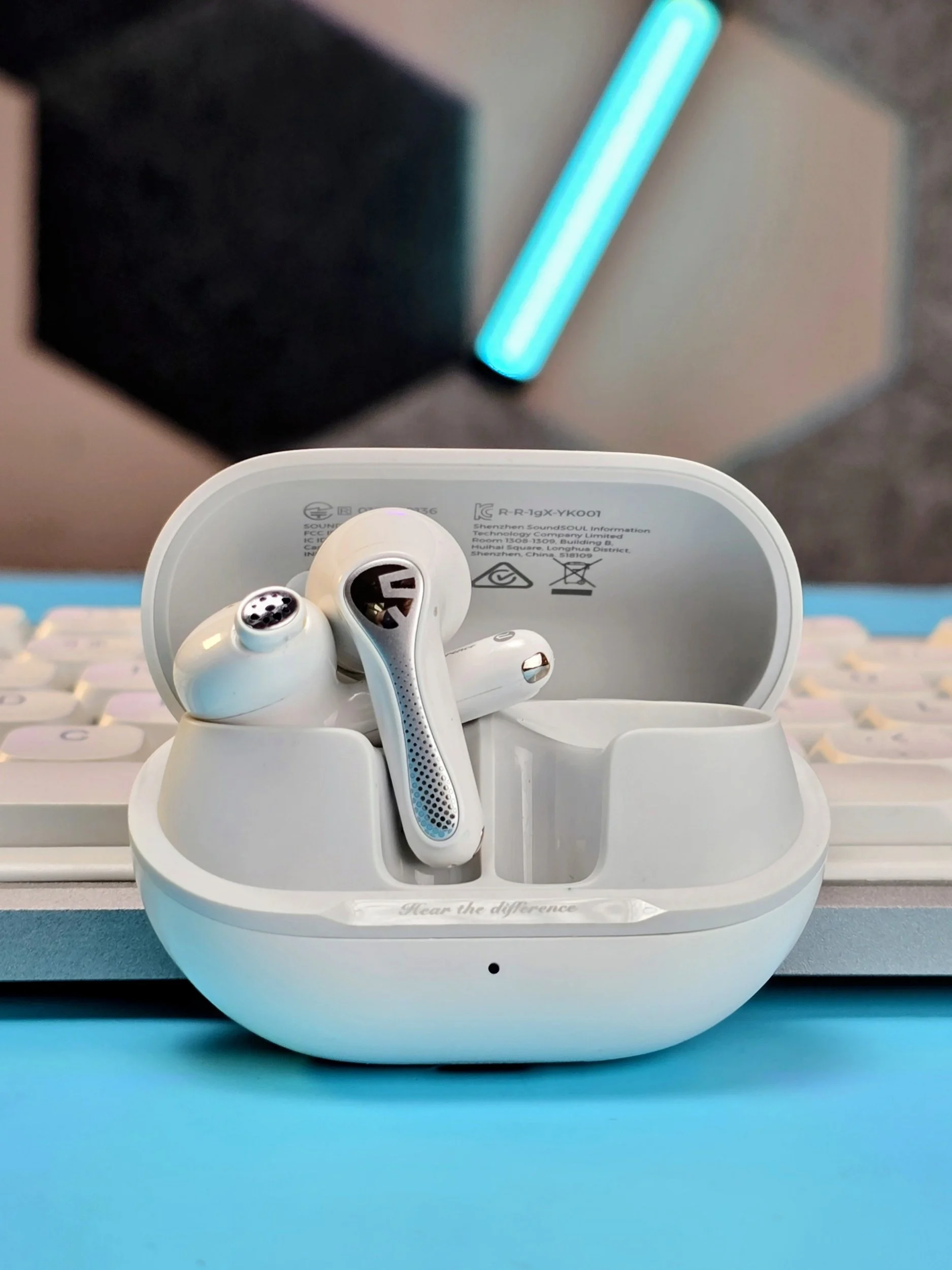SoundPEATS Air5 Pro Review
/SoundPEATS Air5 Pro Review: Premium Performance at Half the Price
When a value-driven headphone company sets its sights on a premium pair of true wireless earbuds, you get the SoundPEATS Air5 Pro. And let me say this right up front — these are S-tier headphones for their price point.
After reviewing over 150 pairs of earbuds, I can confidently say that SoundPEATS has delivered another banger of a product that brings serious competition to more expensive brands.
Key Features and Specs
The SoundPEATS Air5 Pro pack an impressive spec sheet for under $100:
Audio Codecs: LDAC, aptX Lossless, aptX Adaptive, LC3, AAC, SBC
AI-powered Adaptive ANC (up to 55dB noise cancellation)
6 microphones with Qualcomm CVC 8.0 for clearer calls
Bluetooth 5.4 with multipoint connectivity and Bluetooth LE Audio
10mm composite driver
IPX5 water resistance
7.5 hours playback (non-LDAC), with 30 additional hours from the case
For the price, that’s an incredible combination of features — especially the inclusion of LDAC and aptX Lossless, which are rare in this category.
Design and Build Quality
The Air5 Pro come in both black and white, with a matte-finish charging case and glossy earbuds. The case is compact, with a magnetically held lid, USB-C charging port surrounded by metal, and a reset/pairing button next to it. A tri-color LED indicator sits up front.
The earbuds themselves have a short stem, metal speaker grill, and oval ear nozzles. They’re lightweight, comfortable, and stay secure even during workouts.
My only complaint is that the lid plastic feels a bit thin — but at this price point, it’s a fair tradeoff for the features you’re getting.
Mic Performance
The six-mic array with Qualcomm CVC 8.0 does a solid job for calls. Voices come through clean and natural with minimal background interference. Indoors or outdoors, the mic performance is above average for this price range.
Latency and Gaming Mode
SoundPEATS includes a low-latency gaming mode, which noticeably reduces audio delay when watching videos or gaming. With it on, sound stays tightly synced to visuals — something not all budget earbuds pull off well.
SoundPEATS App
The SoundPEATS app is surprisingly full-featured. You can:
Switch between multiple ANC modes
Adjust the EQ or use presets
Enable LDAC or LE Audio
Run hearing and fit tests
The EQ customization is especially useful if you want to tweak the sound profile — though out of the box, most users won’t need to.
Active Noise Cancellation (ANC)
This is the first time I’ve been genuinely impressed by ANC on a pair of SoundPEATS earbuds. The adaptive ANC does a far better job at blocking out higher frequencies that older SoundPEATS models struggled with.
In the gym or on a commute, I could comfortably listen at 50% volume and barely hear the outside world. For midrange earbuds, that’s a big win.
Sound Quality
The SoundPEATS Air5 Pro are tuned for fun rather than flat, reference-style sound.
Bass: Rich and full, though sub-bass thump is a bit light compared to IEMs like the KZ Vader Pro.
Mids: Slightly recessed, but still clear and well-defined.
Highs: Bright — right on the edge of too sharp — but well-balanced by the bass.
The soundstage isn’t expansive but feels natural and open enough for everyday listening. Best of all, you can tweak the EQ inside the app to match your taste.
Battery Life
You’ll get around 7.5 hours of playback (without LDAC) and up to 30 additional hours from the charging case. With ANC and LDAC enabled, expect that number to dip a bit — but overall endurance is solid.
What Could Be Better
No product is perfect, and the Air5 Pro have a few drawbacks:
The case lid could feel sturdier.
No in-ear detection, a feature I loved on previous SoundPEATS models.
Still, these are minor complaints in an otherwise outstanding package.
Final Verdict: A True Value King
If you’re looking for premium sound, adaptive ANC, and modern features without paying flagship prices, the SoundPEATS Air5 Pro are an easy recommendation.
They offer LDAC, aptX Lossless, Bluetooth LE, great comfort, and impressive ANC — all at around half the price of their high-end competitors.




















